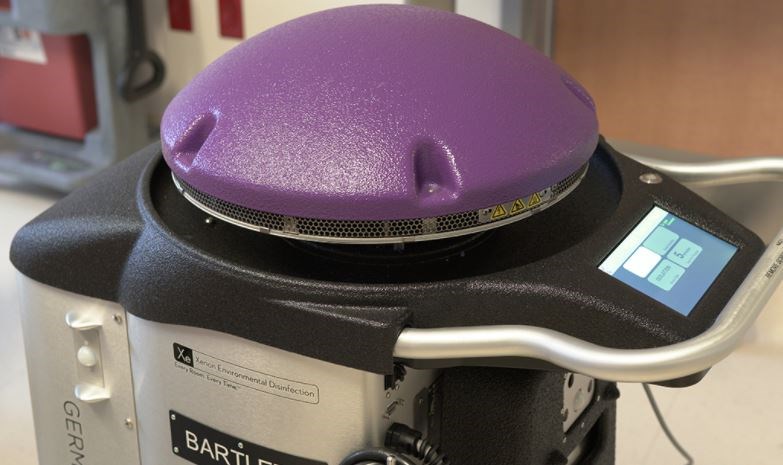Fraser Health has unveiled what it says is a new weapon to combat COVID-19 and other infectious diseases, as 14 new Ultraviolet Germicidal Irradiation (UVGI) robots are deployed to hospitals to kill viruses and bacteria.
The fleet will join two existing robots – known as Phoenix and Haley – in targeting germs that linger on surfaces and can potentially cause infections. Fraser Health staff voted to name two of the newcomers – Bonnie and Henry – after Dr. Bonnie Henry, B.C.’s provincial health officer.
The robots cost approximately $2 million in total and are funded in part by donors who support their local hospital foundations. Surrey Hospitals Foundation, Royal Columbian Hospital Foundation, Peace Arch Hospital Foundation, Delta Hospital and Community Health Foundation, Burnaby Hospital Foundation, Langley Memorial Hospital Foundation, and the Fraser Valley Health Care Foundation fundraised specifically for the robots.
“We are grateful for the generosity of our community,” said Dr. Victoria Lee, president and CEO, Fraser Health, in a news release. “It is through their support that our UVGI program has grown from a pilot project with two robots to a comprehensive program with 16 in just four years.”
The Xenex LightStrike Germ-Zapping robots emit short pulses of UV light, damaging the DNA and RNA of harmful pathogens, including COVID-19 (SARS-CoV-2), C. difficile (Clostridioides difficile), CPO (Carbapenemase-producing organisms), C. auris (Candida auris), and MRSA (methicillin-resistant Staphylococcus aureus).
The robots light up a room as they disinfect, removing viruses and bacteria in as little as 20 minutes.
Housekeeping and clinical staff plan the robots’ schedule. The robots themselves keep an internal time-sheet of where and when they work and the data is sent to a server so Fraser Health can monitor usage. They may be the flashiest part of the infection team, but the robots don’t work alone. An Environmental Services (EVS) operator is at the controls, working with Fraser Health Infection Prevention and Control, housekeeping staff and health care aides using traditional and chemical cleaning methods.



